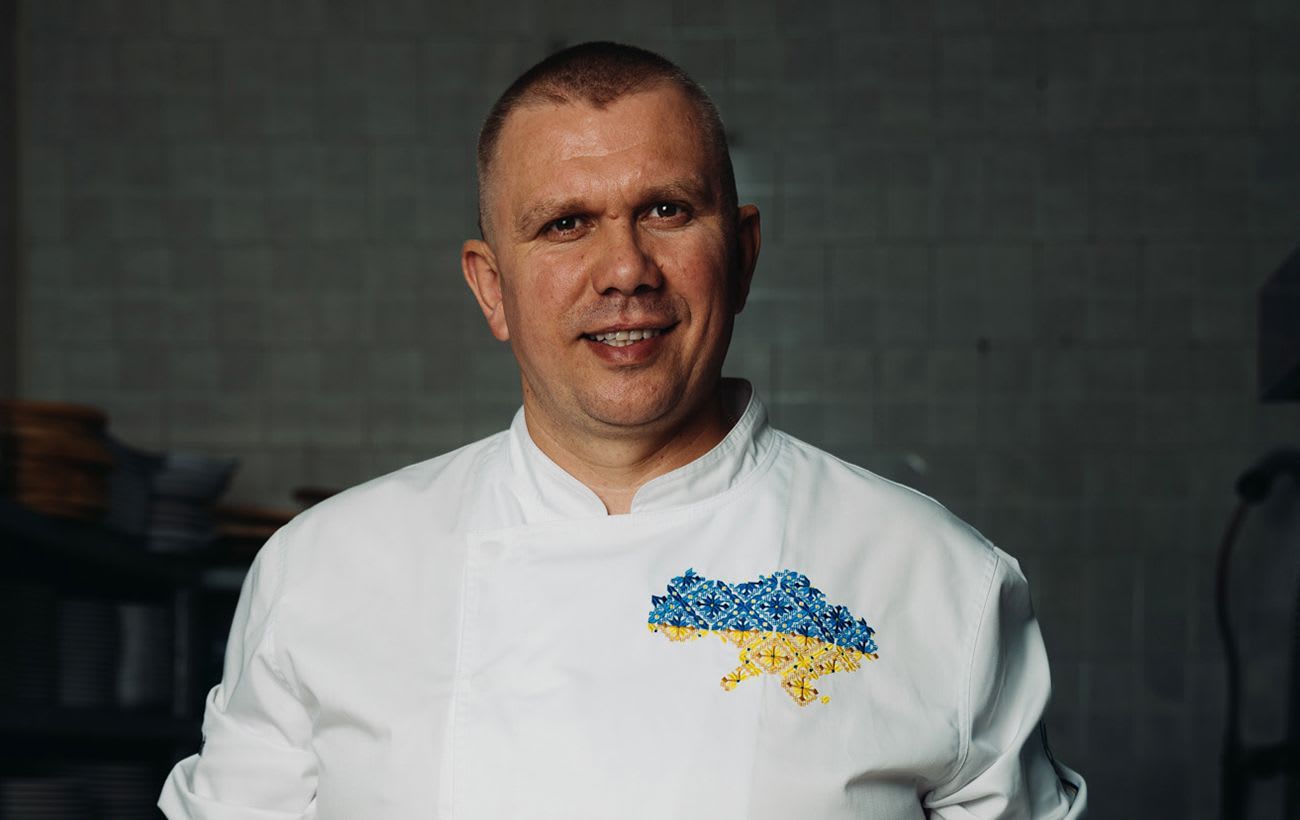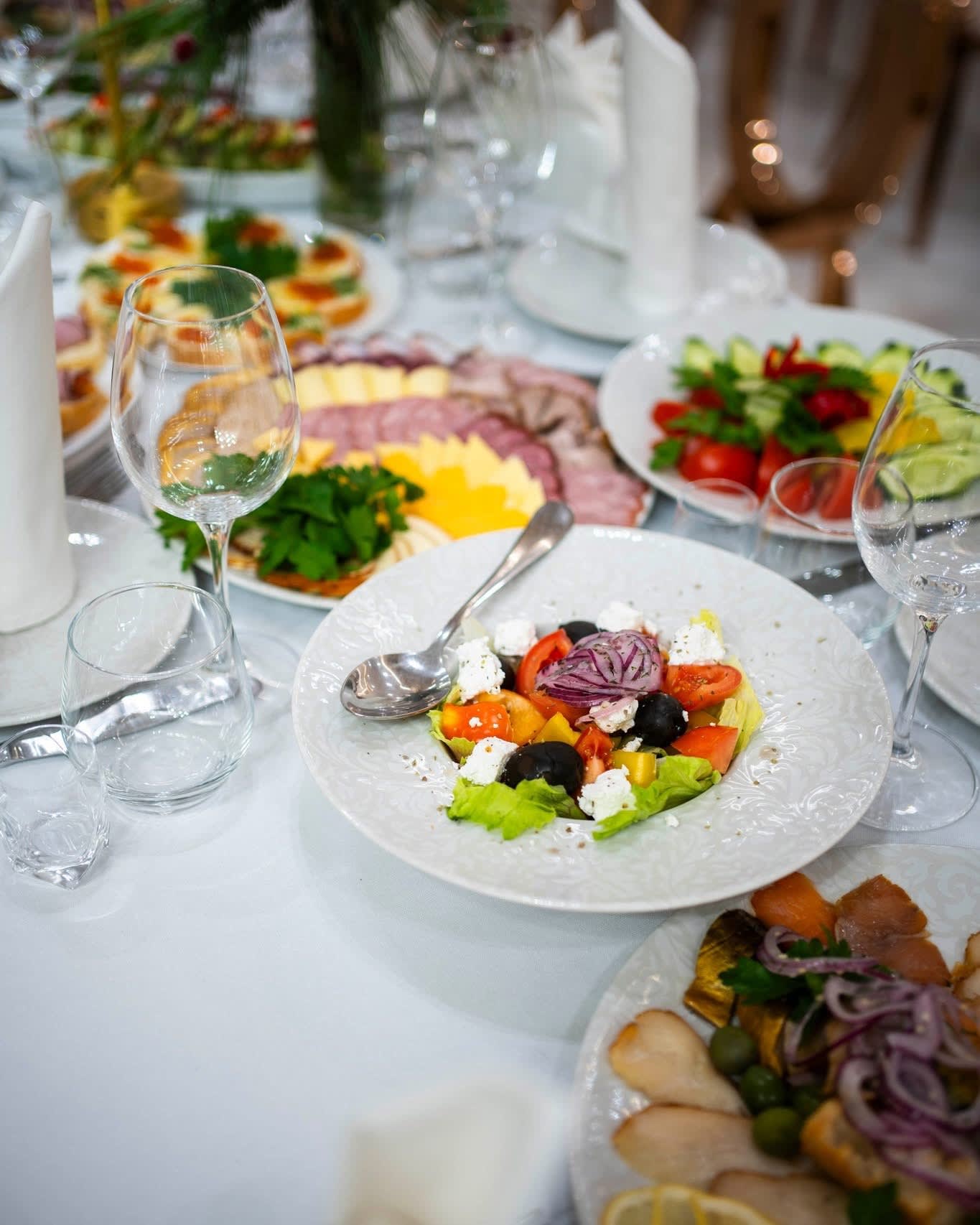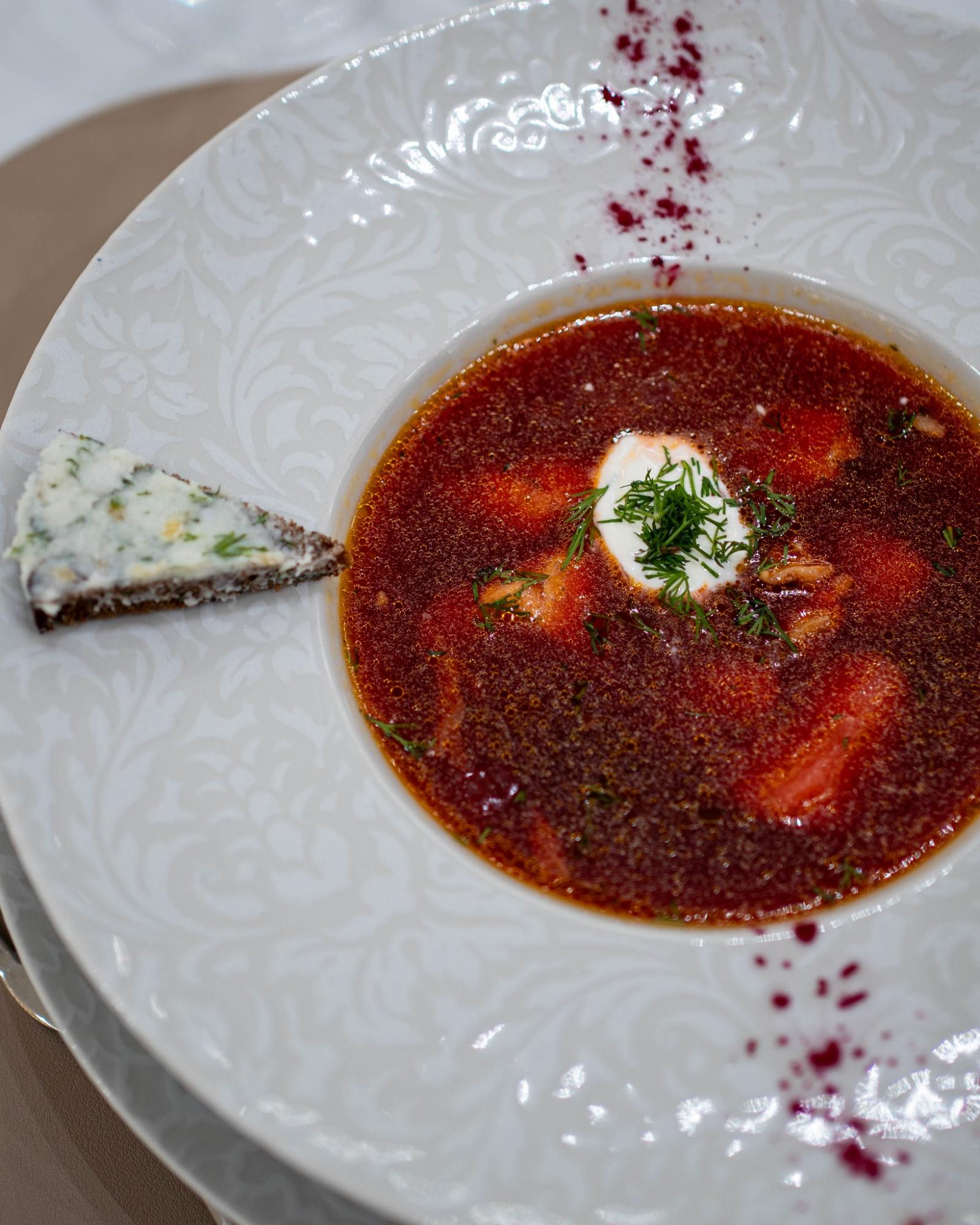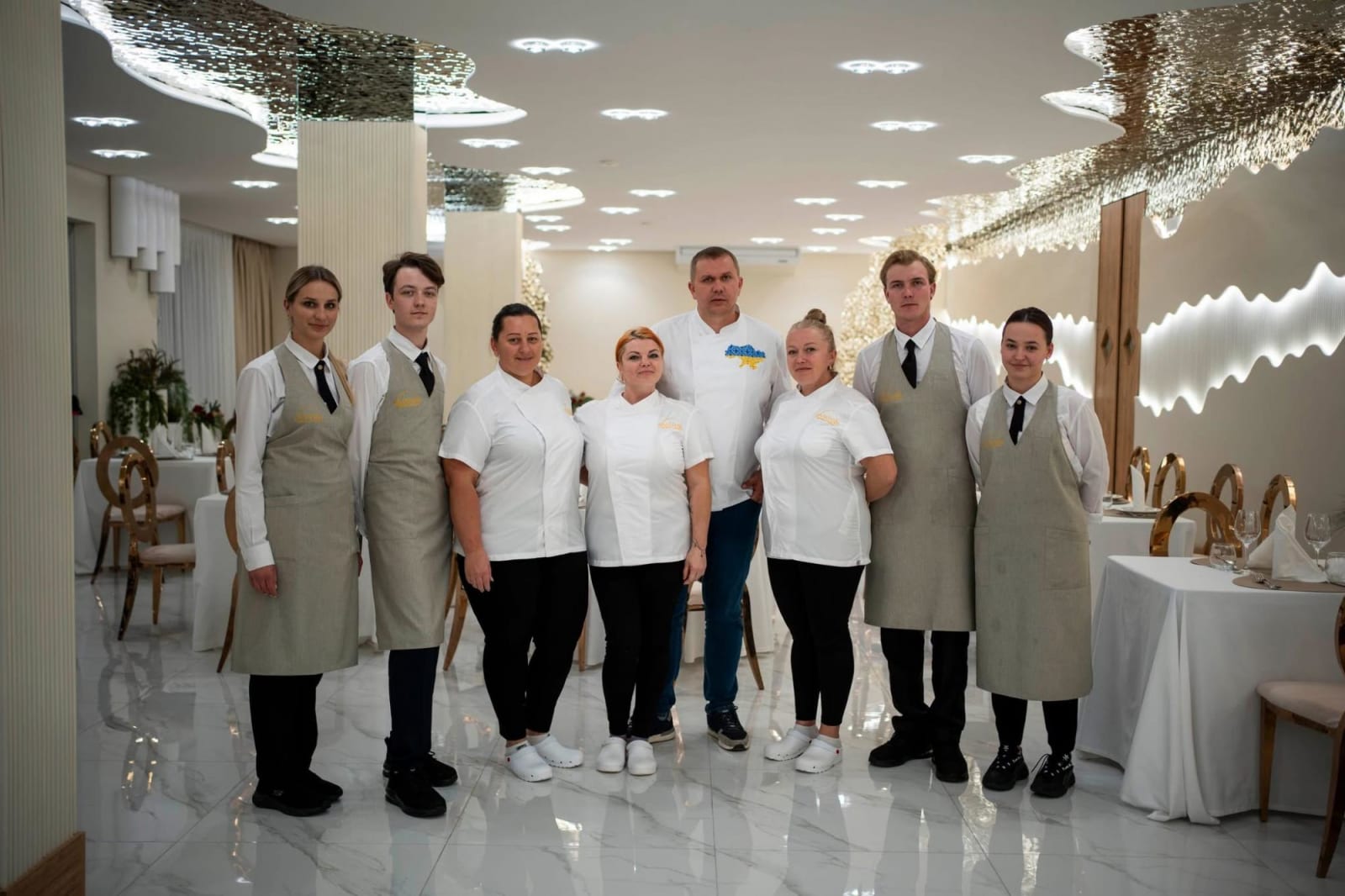
Why borscht shouldn't be modified, how varenyky has become Italy’s latest pasta alternative, what meals have reshaped Europe's perception of Ukraine, and why Italians shed tears over the Ukrainian national anthem when they order deruny — restaurateur Mykola Oleksiv recounts his experiences in an interview with RBC-Ukraine.
He departed from the Ternopil area over fifteen years ago, yet he continues to uphold and enrich Ukrainian heritage via his cooking, ambiance, and social connections. Mykola Oleksiv, who runs "Anastasia" restaurant in Naples, has transformed this establishment into much more than merely a food haven—it serves as an essential meeting spot where memories are shared and resilience is fostered among Ukrainians and residents alike.
His borscht, deruny, and varenyky astonish Italians; his ribs wow them; and evenings filled with Ukrainian music bring them to tears.
During an open conversation with RBC-Ukraine, he discussed his refusal to alter the recipe for borscht, reflected on how the conflict has influenced the flavor of classic meals, shared insights into how Ukrainian hospitality astonishes Europeans, and explained why operating a eatery overseas can transcend being merely a commercial venture.
– Mykola, how did you start building the menu at Anastasia? Were there any dishes you had to adapt to Italian tastes — and on the other hand, which ones remained "sacredly Ukrainian"?
– The menu at Anastasia began as an aspiration to showcase genuine Ukrainian fare—cuisine characterized by strong heritage and robust taste and spirit. Concurrently, we recognized that Italy boasts its own culinary customs, where individuals have come to expect specific flavors and plating techniques.
This is precisely why we needed to consider the preferences of the Italian viewers, for whom not just the components but also the visual appeal, overall aesthetics, and even the lightness of the meals play crucial roles.
Nevertheless, certain items like borscht and varenyky were intentionally kept "sacrosanct." We did not alter their recipes since these dishes form an integral part of our identity and culture, elements that ought not to be compromised.
We made slight updates to other dishes such as deruny, holubtsi, and salads by incorporating local ingredients or serving them in innovative ways to make them more appealing to our Italian guests, all while maintaining their original essence.
Consequently, the menu struck a harmonious blend of tradition and innovation, enabling our restaurant to evolve into a distinctive cultural hub.
- Did you have to “reimagine” any ingredients to make Ukrainian dishes in Italy? What products were the hardest to come by?
— Certainly, there were some hurdles when it came to ingredients. Ukrainian cuisine frequently depends on distinctive items like handcrafted sour cream, particular kinds of salo, cottage cheese, authentic sausages, or even certain vegetables that aren’t commonly found in Italy.
For instance, locating premium smoked goods featuring the precise flavor profile we required proved challenging since the smoking techniques used in Italy vary. Additionally, certain vegetables and cereals have distinct tastes and textures, necessitating adjustments to our recipes to accommodate these differences.
We needed to experiment: look for suppliers, work with local farmers, and occasionally substitute ingredients with comparable options that offer a local touch.
This was also an intriguing exercise—to “reimagine” the recipes in a manner that maintained their core identity while ensuring they remained appealing and comprehensible to an Italian diner.
- Could you contrast the quality and accessibility of goods in Ukraine and Italy?
– It’s challenging to compare the quality of goods between Ukraine and Italy since both nations have their distinct strengths and particularities.
In Italy, farming is highly developed. Many local products are of excellent quality, and this is evident in their freshness and flavor. However, quality and price do not always equal accessibility.
In Ukraine, numerous natural items—particularly those from agriculture—are both high-quality and reasonably priced. Conversely, in Italy, although people generally have greater spending power, the prices for goods, particularly imports, tend to be much higher.
Therefore, the assertion that everything costs less in Europe turns out to be incorrect. Actually, in Italy, many items tend to have higher price tags—especially those known for their quality and natural characteristics.
An additional aspect is that in Ukraine, one can frequently discover more "homegrown" items sourced straight from the origin, bypassing middlemen, which influences their cost and freshness. This varies based on the type of product and the area.
— Are there components in Italian cooking that strongly mirror Ukrainian recipes, allowing you to create a sort of “culinary connection” between these two culinary traditions?
— Indeed, I think numerous Italian dishes have similar characteristics to Ukrainian cuisine, primarily a dedication to homemade, straightforward, and genuine tastes.
For instance, Italian staples like pasta, risotto, or polenta showcase regional differences and are crafted with a dedication to locally sourced ingredients.
We frequently utilize this approach to create a "link" between the two cultures—such as incorporating Italian veggies, herbs, or seasonings into Ukrainian recipes—which makes these dishes more appealing to locals while maintaining their original essence.
This enables visitors to effortlessly interact with our dishes and simultaneously discover novel tastes presented in a recognizable format. Such an approach aids in cultivating cross-cultural conversations and spreading awareness of Ukrainian culinary traditions globally.

Restaurant owner Mykola Oleksiv states that many Italian dishes share similarities with Ukrainian cuisine (the photo was supplied by the restaurant owner).
— What are the most favored Ukrainian dishes amongst Italians?
— Over the years, I’ve seen a growing interest from Italians. When we first started, there were just a few. Now, Italians make up nearly 30% of our guests — and they’re thrilled! They love varenyky, deruny, and borshch. Many of them order the same dishes every time because they know how good they are.
Meat dishes are also in high demand — shashlik, ribs. They like that we use high-quality local meat but prepare it in a Ukrainian way, with our own marinades and sauces.
Our salads, offered with a fresh update, are equally popular. We’re crafting a sophisticated take on Ukrainian cuisine—enhanced plating, innovative mixes—and this approach resonates strongly with Italian diners.
Appearance matters greatly. When a meal is visually appealing, tasty, and presented with care, diners value it more. It's not merely about putting food on a plate; instead, we share a narrative, describe what it is, and discuss its preparation method. Our visitors truly enjoy this engagement.
— What tends to surprise Italians the most? Which Ukrainian dish has proven the toughest to describe?
— Varenyky! You might call them our specialty. Whether filled with potatoes, cabbage, or cherries—they're always popular. Another crowd-pleaser is deruny. Each evening, we sell just as many deruny as varenyky.
Borscht consistently tops the list of favorites. First-time visitors frequently ask, “Could I order the same dish again tomorrow?” The shashlik is particularly beloved—people appreciate how tender and perfectly marinated the meat is. As for our ribs... they hold their own tale. Many customers return solely because of them. They comment, “All we crave are those ribs; nowhere else do we find such an experience.”
However, it might not just be about the food itself; it's the entire ambiance. The Italians are truly astonished by our warmth and welcome. They remark, “In this place, we can relax, savor our meal, listen to some tunes — without anyone hurrying us along!”
We frequently organize evenings featuring Ukrainian music, and occasionally we have dancing as well. The Italians find this quite appealing—it’s a novel experience for them. Typically, they're accustomed to routines where everyone eats and departs promptly. In our setting, however, it feels like being at home—you can unwind, converse, and savor the moment. This truly attracts them.
Another point is that they're really amazed by how we maintain our culture and never let it slip away. Instead, we actively share it with others. This adds a richer significance to all that we undertake.
— Have you ever found yourself clarifying that borshch is more than just a soup—it’s an integral part of cultural identity?
— Definitely. I frequently stress that borshch encapsulates the history, customs, and sentiments of our community. To numerous Italians, this comes as an eye-opener—they're astonished by its complexity and depth, as well as the rich symbolism it embodies.
The response is typically quite favorable. Individuals recognize it goes beyond mere sustenance; they appreciate the opportunity to delve into cultural richness via taste. This aspect is crucial for me: leveraging cuisine as a means to convey Ukraine’s narrative in an accessible and understandable manner.

For numerous Italians, Ukrainian borshch is an eye-opener (a photo supplied by the restaurant owner is included).
— Are Italians prepared to accept Ukrainian cuisine as being equally culturally significant as their own?
— Italians greatly value their culinary heritage, making it challenging for them to embrace something novel without thorough comprehension. However, Ukrainian cuisine, distinguished by its distinctive essence, robust tastes, and profound cultural foundations, is slowly but steadily earning acknowledgment.
Visitors who invest effort into discovering our meals and customs start to value Ukrainian cuisine not merely as an intriguing novelty but as a comprehensive gastronomic tradition backed by a profound heritage.
Certainly, this is an incremental journey, and sustained initiatives to advocate for it remain crucial. However, gradually, Italians are beginning to view Ukrainian cuisine as equally deserving of admiration—as much so as their native culinary traditions.
— Which less familiar Italian dishes do you suggest Ukrainian travelers should sample?
For those from Ukraine traveling to Italy, I would recommend sampling some regional dishes that might appear straightforward initially but truly encapsulate the essence of Italian cuisine.
Take minestrone, for example — a hearty vegetable soup that, in some ways, resembles our borshch, but with Italian character, rich in vegetables and fragrant herbs.
Another dish you should consider trying is polenta. Made with cornmeal, this accompaniment can vary widely in texture, ranging from smooth and velvety to crunchy and crisp. You might even think of it as an alternative to certain classic Ukrainian sides.
I'd similarly suggest focaccia, which is a baked flatbread topped with various ingredients. This dish is a cornerstone of traditional Italian home cooking and enjoys widespread popularity throughout Italy.
And let’s not forget about the Italian cheeses. These differ significantly from what we have and can aid tourists in grasping the local cuisine more effectively, providing an opportunity to contrast known tastes with new ones.
— If we're heading down that path, can you mention some Italian dishes that are considered overly praised in Ukraine?
In Ukraine, specific Italian meals frequently evoke significant excitement; however, this enthusiasm can sometimes escalate into an overstatement, particularly regarding traditional favorites such as pasta carbonara or risotto.
These dishes are certainly delightful and well-known, yet they aren’t typically prepared in Ukraine as they were originally crafted in Italy—often because genuine ingredients are unavailable or out of an unfamiliarity with classic methods. Numerous Ukrainian eateries offer quick, pared-down renditions of these meals lacking the refinement that sets them apart.
Consequently, visitors might leave with the notion that "Italian food is only about pasta," whereas genuine Italian culinary arts encompass a much broader spectrum of flavors and dishes.
It’s crucial to grasp that Italian cuisine extends beyond mere recipes; it encompasses a philosophy of cooking, an appreciation for seasonal produce, and masterful techniques. Therefore, I’d urge Ukrainians to delve into the varied regions of Italy and avoid limiting their understanding to only a handful of well-known dishes.
— Does fried spaghetti and pineapple pizza genuinely irritate Italians, or is this merely a meme stereotype?
— This story really marries genuine enthusiasm for food with a touch of comedy. In Italy, many people hold their cooking traditions in high esteem and consider them an integral part of being Italian. For this reason, pineapple pizza is often viewed nearly like a culinary “heresy,” violating every principle they believe in.
They frequently respond with sarcasm, or mild irritation, feeling that pineapple doesn’t belong in the traditional taste combinations of Italian pizza.
Fried spaghetti is more like a quirky joke or internet sensation among Italians rather than a serious meal option. They think that pasta shouldn’t have too much oil or fat, which can occur in some variations, and they emphasize that basic components and high-quality ingredients matter most.
So while these dishes do come up in food conversations, they’re usually used as humorous examples that highlight just how seriously Italians view their gastronomic heritage.


In Italy, Mykola Oleksiv launched a Ukrainian cuisine restaurant called "Anastasia" (the photo was shared by the restaurateur).
— Have you observed any differences in the flavor profile or popularity of Ukrainian cuisine since February 24?
— Ever since the beginning of the full-scale war in Ukraine, there has been a significant surge in international interest in our cuisine. People started seeing Ukrainian food not just as something novel or foreign, but as a vital cultural emblem—a means to back the nation and its citizens during this challenging period.
We observed that the inquiries grew more reflective; visitors were not merely interested in sampling borscht or varenyky anymore, but they also sought to comprehend the significance of these specific dishes to us. This added a richer layer of meaning to our culinary offerings and simultaneously motivated us to meticulously uphold traditions and present each dish with an appreciation for its heritage.
Preferences have evolved as well: meals rooted deeply in home cooking, previously seen merely as "ordinary fare," became trendy. This newfound appreciation fostered a stronger feeling of community and bolstered the significance of our traditional dishes, turning the cuisine into a robust cultural link.
— Since the beginning of the full-scale war, has the perception of Ukrainians among Italians changed?
— Indeed, the image of Ukrainians in Italy has changed dramatically over the past few years. Earlier, we were often viewed primarily as migrants or tourists, but since the start of the conflict, we have come to represent resilience, bravery, and inner fortitude. This shift led Italians to become more engaged with our culture and heritage, supporting us not just verbally but also through tangible assistance.
This fresh circumstance has elevated our levels of respect and compassion, crucial elements for promoting comprehension and inclusion within society. Concurrently, it has instilled a feeling of solidarity and backing among Ukrainians in Italy, motivating us to keep showcasing our heritage and culinary arts. This helps construct a favorable portrayal of our nation, even during challenging periods.
— What has been the most touching moment at your restaurant?
Again and again, individuals from various parts of Italy visit us to immerse themselves in the welcoming and supportive atmosphere of a Ukrainian establishment. To numerous guests, our restaurant isn’t merely a dining spot; rather, it serves as a second home offering them comforting tastes and an emotional sanctuary.
Without a doubt, the most moving instances were during the charitable events where numerous fellow Ukrainians and locals gathered to aid our country. Many visitors arrived from different towns—not only for the food but also to find a sense of community. They shared, “We found out online about this slice of home, so we came to experience that comforting feeling.” Such heartfelt comments truly resonate with us.
For us, this underscores that a restaurant is much more than merely a location for preparing meals. It serves as a hub for coming together, offering support, and fostering community spirit.
The most touching event occurred during our inaugural charity concert benefiting Ukraine. Attendees shed tears throughout the acts, joined voices to sing the national anthem, hugged each other, and conveyed their appreciation for the ambiance. It seemed like everyone was part of an extended family divided by circumstance yet brought together around a common table.
There was one instance that remains vividly etched in my memory. An older gentleman from Italy entered the place. He did not make an order; instead, he approached the donation box, put 200 euros into it, and stated, “This money is for the children of Kharkiv.” He declined our offer to mention his name. Such instances remind you deeply: kindness recognizes no borders.

Restaurant owner Mykola Oleksiv notes that following February 24, there was an increased interest in Ukrainian cuisine overseas (the photo has been supplied by the restaurant owner).
— What significance does it hold for you to set your restaurant as an exemplar? Are you aiming this toward Ukrainians living overseas or Italians who wish to discover more about Ukraine?
For me, it signifies establishing more than merely a venue that offers tasty meals; rather, it’s building a genuine cultural hub that blends old customs, warm welcomes, and contemporary elements. This spot allows Ukrainian expatriates to experience familiarity, rediscover their origins, and receive assistance. Additionally, it acts as an entry point for Italians and every visitor interested in understanding Ukraine via its gastronomic legacy, rituals, and individual narratives.
I aim to make our restaurant a link connecting different cultures, fostering mutual comprehension and respect, and broadening avenues for conversation and collaboration. This venture goes beyond commerce—it’s a purposeful endeavor that infuses each day with significance.
— What do you mean by "Ukrainian hospitality" abroad?
To me, Ukrainian hospitality goes beyond mere courtesy or simply providing meals and refreshments. It’s truly about crafting an environment where each visitor feels as comfortable as they would in their own home, with every action brimming with warmth, meticulous care, and genuine authenticity.
In distant lands, away from their native country, hospitality holds a profound significance—it becomes a means to offer a glimpse into Ukraine’s essence via humble acts such as preparing home-cooked meals, offering an authentic grin, and being ready to lend an ear and provide encouragement.
For us, this is also an obligation—to act as a bridge that assists individuals in gaining a deeper understanding and appreciation of our culture. This is precisely why Ukrainian hospitality at our restaurant extends beyond just the cuisine; we strive to foster a homelike ambiance where every guest feels welcomed and esteemed.
— What symbol or picture do you think best represents contemporary Ukraine?
If I had to pick a symbol that embodies the essence and contemporary nature of Ukraine, I would select the sunflower.
This bloom stands as an emblem of our homeland and sunlight, embodying resilience, vigor, and optimism. Much like the sunflower that continually pivots toward the light, it serves as a reminder of our people—those who stay hopeful and resolute even when faced with challenges. Though straightforward in appearance, it conveys profound power, reflecting the fortitude present in each person from Ukraine nowadays.
To me, this picture embodies warmth, hospitality, and an ongoing eagerness to progress while maintaining customs and principles.
— Which flavor or scent reminds you of home?
For me, home is the flavor of newly cooked borscht paired with handcrafted sour cream and the fragrance of pastries permeating the whole kitchen. These aromas remind me of cozy family times, my younger years, and feelings of security. What stands out most is the scent of the dumplings my mom would make for special occasions along with the soothing aroma of peppermint tea that used to help soothe me.
For me, these scents represent the genuine essence of home—a recipe I can replicate even when far away—and every instance they transport me back to my origins, flooding my heart with warmth and motivation. Through these flavors and odors, I sense that Ukraine remains close to me irrespective of my location.